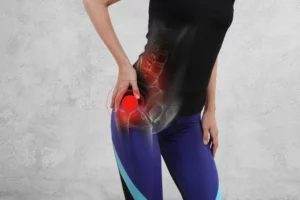The pelvic floor – possible problems and solutions.
Louise Henderson and Rebecca Rutherford (our resident experts in women’s health) recently gave a talk at the practice regarding exercise and the pelvic floor. In case you missed it, here are the key points.
We know that exercise is important for everyone for many reasons – weight control, cardiovascular fitness, management of back pain etc. In women resistance exercise is also important in maintaining bone density. Exercise can unmask/ exacerbate some pelvic floor symptoms -mainly stress urinary incontinence and pelvic organ prolapse.
Stress urinary incontinence is the leaking of urine with physical exertion, cough, sneeze etc. We often see women who are asymptomatic until they take up running or return to the gym after having children. Pelvic organ prolapse is the descent of one of the pelvic organs into the vaginal space and may be noticed with running or jumping activities or resistance exercises such as deep squats or strong pushing or pulling activities (eg. Tug of war) Both conditions may be more noticeable in the perimenopausal phase. Urgency or urge incontinence is also more prevalent in this age group and can also be helped by physiotherapy.
So how can we keep exercising and reduce symptoms?
- modify the exercise- eg. Reduce speed/distance of running
- strengthen the pelvic floor – like other muscles, we need to establish the baseline strength of the muscles and design an appropriate programme. If the muscles are quite weak, exercises will begin in lying and progress to sitting and standing. If the muscles are already strong, they need to be exercised in functional positions specific to the exercise or sport.
There is also the possibility of using biofeedback devices.
- Fit a pessary if appropriate. Rebecca is trained in fitting these and she can discuss the suitability with the patient and their doctor.
- Medical referral – sometimes there is a role for vaginal oestrogen which can be discussed with your GP.
Occasionally, the above measures are not sufficient to improve symptoms adequately and referral to a specialist is required.
How do I know if I’m doing pelvic floor exercises correctly?
We often use real time ultrasound to show us if you are contracting the muscles in the correct direction. However, it doesn’t tell us about strength – this can be checked with an internal examination if you are comfortable to do so.
If you would like to make an appointment with Rebecca or Louise at Total Physio, please phone 9907 0321. Please inform reception it is for a pelvic floor assessment as initial appointments are one hour.


